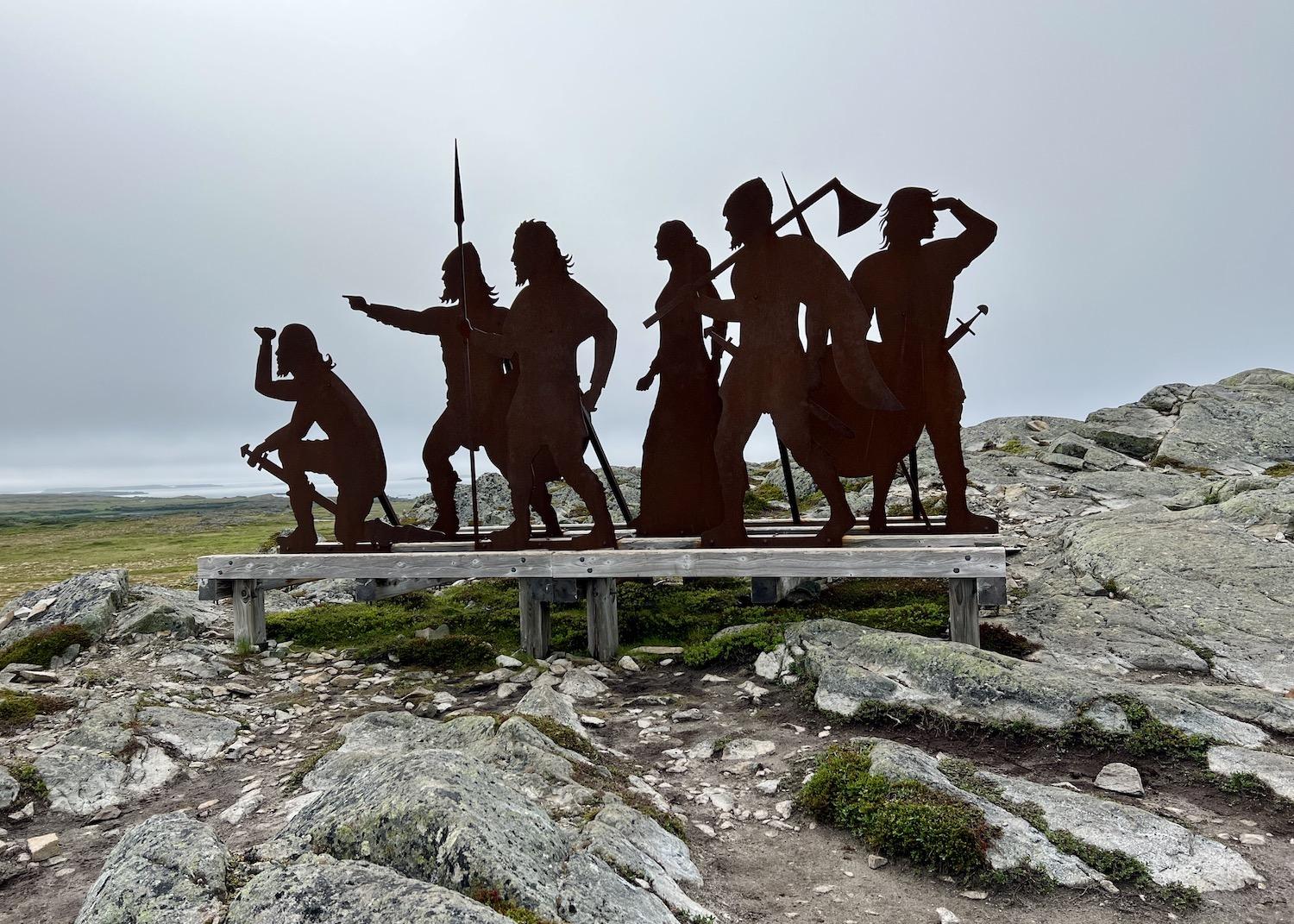
Artist Karen Van Niekerk's Corten steel sculpture at L'Anse Aux Meadows National Historic Site depicts how Vikings used the area as a base camp/Jennifer Bain
Six armed Vikings perched on a wooden platform atop a rocky hill at the tip of the Great Northern Peninsula in Newfoundland, all but one facing southeast to symbolize how this place was once a base camp for Norse explorations.
Climbing the barren hill for a better look, I realized the figures were silhouettes made of thick Corten steel that has weathered nicely with a rusty, orange-brown patina. There was one Norse woman surrounded by five men and they carried swords, shields, axes and spears. Their clothing, hairstyles and weapons are apparently accurate for a time from 1,000 years ago.
This nearly eight-foot-tall sculpture was designed by New Brunswick graphic artist and illustrator Karen Van Niekerk and unveiled in 2012. It provides a dramatic welcome to L’Anse aux Meadows National Historic Site, the only authenticated Viking site in North America, and a UNESCO World Heritage Site that provides evidence of the first known Europeans to set foot on this continent.
“Why are we so fascinated with Vikings?” asks a short film inside the visitor center. “Why did they come, and why here?”
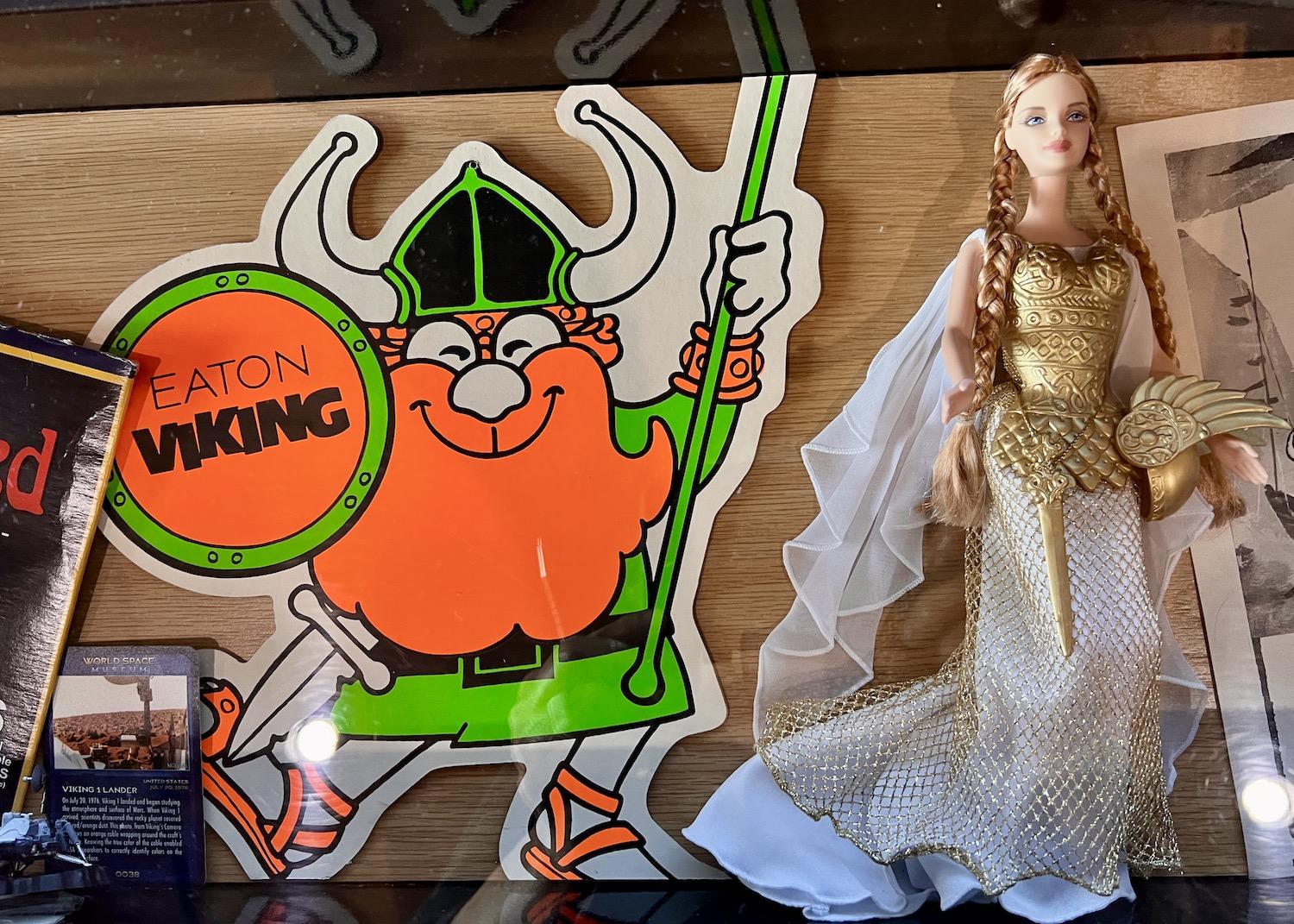
L'Anse aux Meadows National Historic Site has a display of how the Vikings have invaded popular culture/Jennifer Bain
To find out, I lingered over a display of pop culture objects like a vintage “Princess of the Vikings” Barbie, and then joined a tour with Parks Canada heritage presenter Mark Pilgrim.
A local who grew up treating this seaside site as his playground, Pilgrim walked us to another sculpture, actually two separate weathered bronze pieces placed on either side of a boardwalk and looming towards each other like an arch without actually touching. The abstract Meeting of Two Worlds by Newfoundlander Luben Boykov and Swede Richard Brixel was erected in 2002 to symbolize the circumnavigation of the globe by humans.
“This side represents Indigenous culture and this side represents European culture,” Pilgrim explained, pointing to the two pieces. “The statue represents the completion of when globalization happens for humanity, when they complete the circle — and it happens when the Norse came in contact with the Indigenous people here in Vinland.”
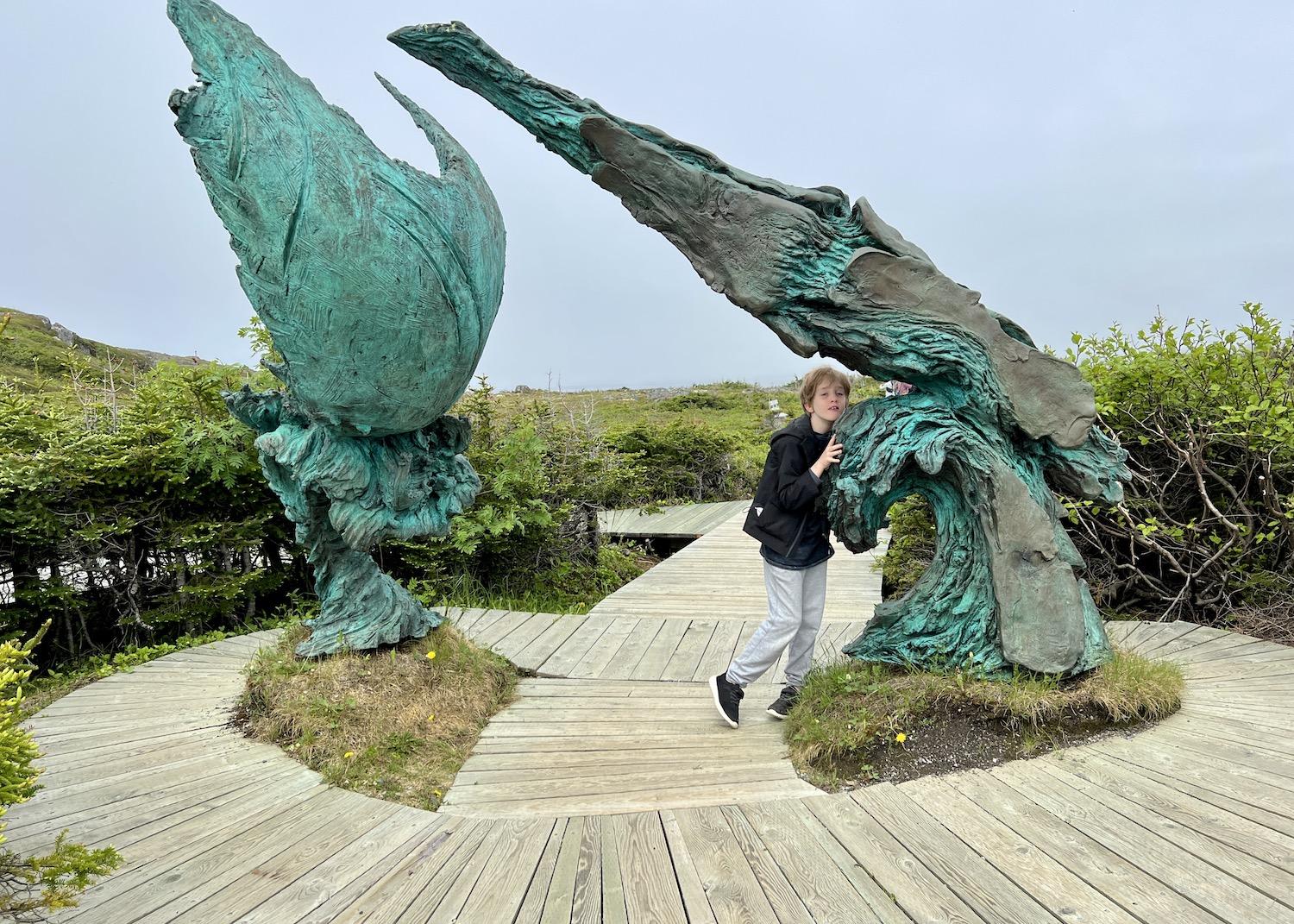
The Meeting of Two Worlds sculpture represents Indigenous and European cultures finally meeting as humans completed a circumnavigation of the globe/Jennifer Bain
Ancient Norse stories known as the Vinland Sagas spoke of a "high-prowed vessel" from Greenland that anchored in a bay along the North American coast they called Vinland long before explorer Christopher Columbus “discovered” the New World in 1492.
After a small bronze cloak pin was discovered here at L’Anse Aux Meadows in the 1960s, a settlement full of wood-framed peat-turf buildings was finally uncovered.
Credit for this discovery goes to Norwegian explorer/writer Helge Ingstad and his archaeologist wife Anne Stine, who are honored with yet another statue here, this one by Nils Aas. A bust that shows their two heads, it stands outside the door to the visitor center. Ingstad was searching for Norse landing spots along the eastern seaboard and, encouraged to find a man named George Decker in what’s now Newfoundland and Labrador, he convinced a Norwegian whaling ship to take him north.
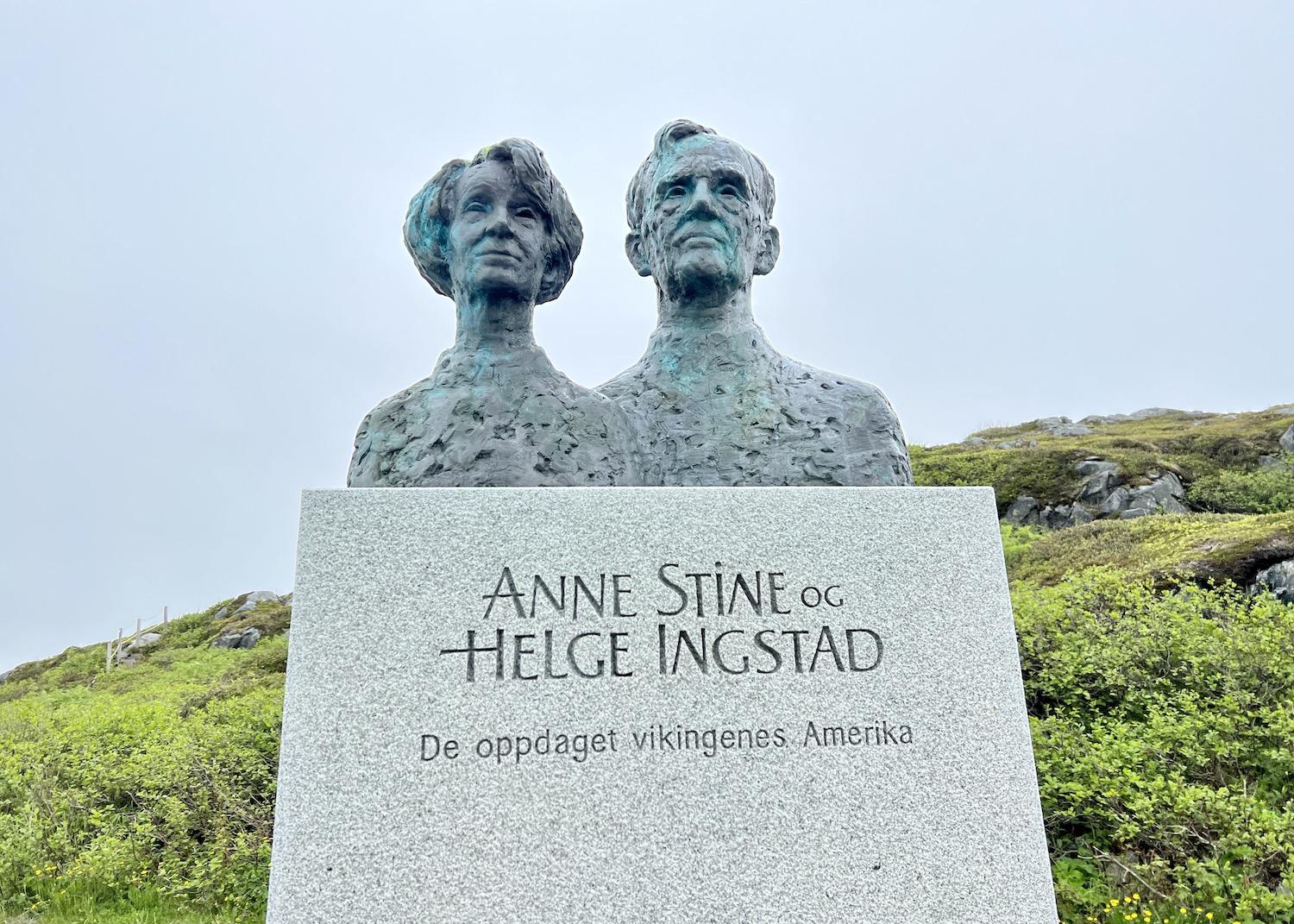
Anne Stine and Helge Ingstad are honored at L'Anse aux Meadows for proving the Norse first landed here when they came to North America/Jennifer Bain
As Pilgrim tells it, Ingstad said to Decker “Any humps and bumps in the ground?” Decker nonchalantly replied "Over here where I cut grass. Come on, I’ll show you" and led him to the place where he cut grass for his cows, a spot that locals referred to as the "the old Indian camp" (terminology that's no longer used).
That was in 1960. Ingstad's wife joined him and they presided over lengthy excavations by an international team. The archaeolgists uncovered the only Norse encampment ever to have been discovered in North America and proved that Leifur Eiríksson and his Norse explorers arrived here from Greenland around 1,000 years ago.
Eight Norse buildings grouped into three complexes were unearthed. The walls and roofs of dwellings, workshops and an iron forge had been made of sod laid over timber frames. Long narrow fireplaces in the middle of the floor served for heating, lighting and cooking. The buildings resembled those used in Norse Iceland and Greenland at that time.
Norse used this site for several years as a base camp and a gateway for summer explorations deeper into Vinland for timber and other resources.
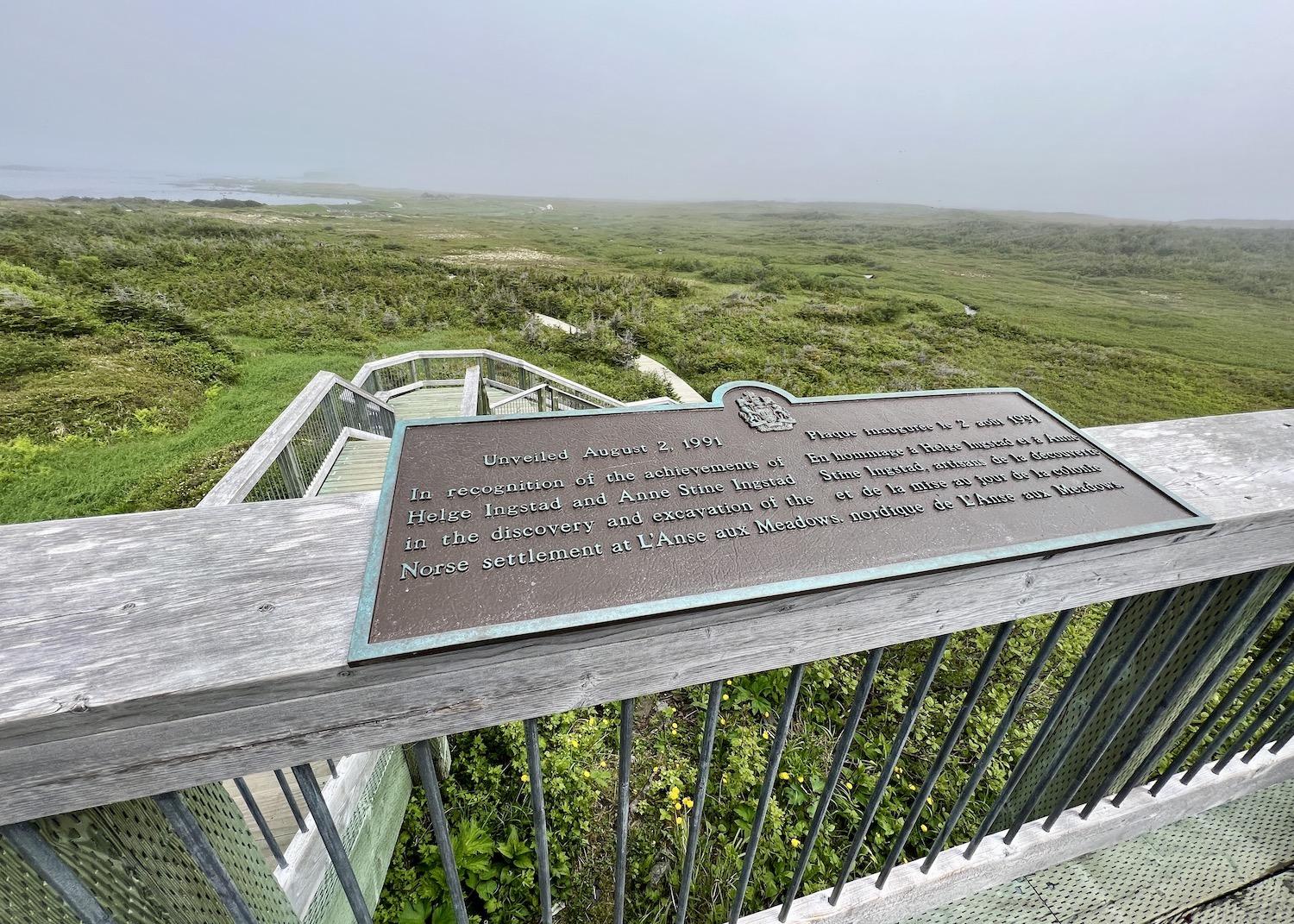
A view from the L'Anse aux Meadows visitor center of the landscape that once attracted a Norse expedition/Jennifer Bain
Archaeologists unearthed artifacts found on similar sites in Iceland and Greenland. A bronze, ring-headed pin like the kind Norsemen used to fasten their cloaks. A stone oil lamp and small spindle whorl, once used as the flywheel of a handheld spindle. The fragment of a bone needle believed to have been used for a form of knitting. A small-decorated brass fragment that once had been gilded. Slag from smelting and working of iron, plus iron boat nails or rivets.
"This, more than any other find, led archaeologists to identify the site as Norse," says Parks Canada.
Then there were butternuts and a butternut burl. Since these things don't grow north of Nova Scotia and New Brunswick, their presence confirmed the Saga claims that the Norse traveled south.
All these finds led to L'Anse aux Meadows being declared a national historic site in 1975 and a UNESCO World Heritage Site in 1978.
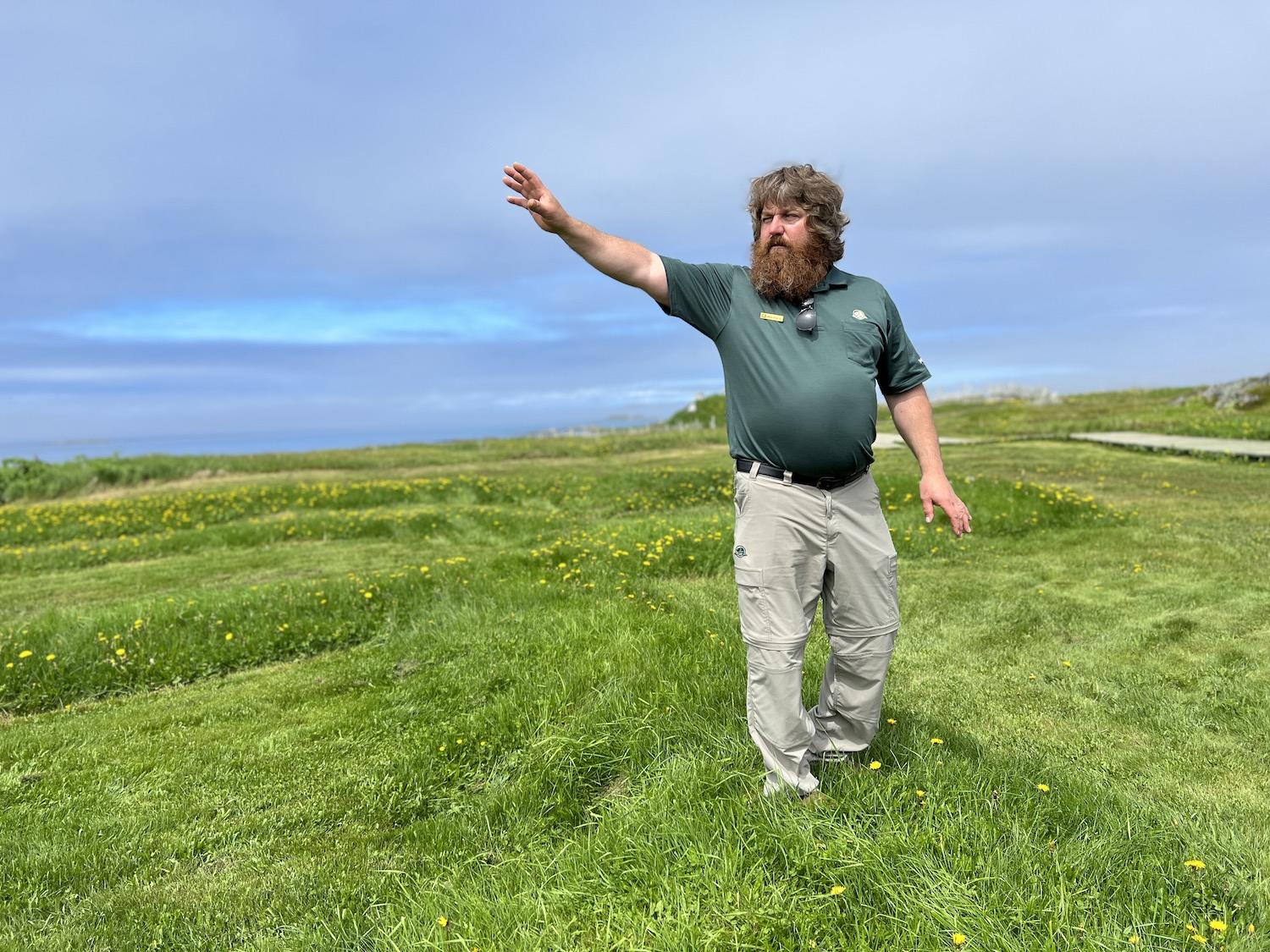
Parks Canada heritage presenter Mark Pilgrim stands on grass above the remains of a Norse settlement from 1,000 years ago/Jennifer Bain
Long popular with international Viking enthusiasts, the seasonal site drew about 12,000 visitors in 2021, down from pre-Covid numbers. It's open from June to early October. Visitors learn that while almost everyone uses "Vikings" and "Norse" interchangeably, Viking is the correct term for Scandinavian men when raiding, and that both men and women can be called Norse.
Inside the visitor center they see original artifacts, a two-thirds scale replica færing Viking boat and a 3D model of the original Norse camp. Outside, there is a grassy area with small plaques in the ground where Norse halls, huts and houses once stood. At a reconstructed Viking encampment, they can meet costumed interpreters, tour full-scale replicas of the Norse sod buildings, and handle replica weaponry, tools and cooking utensils.
They hear how when the Norse encountered Indigenous people in the region, it represented the first time that human migration out of Africa completed the circumnavigation of the globe.
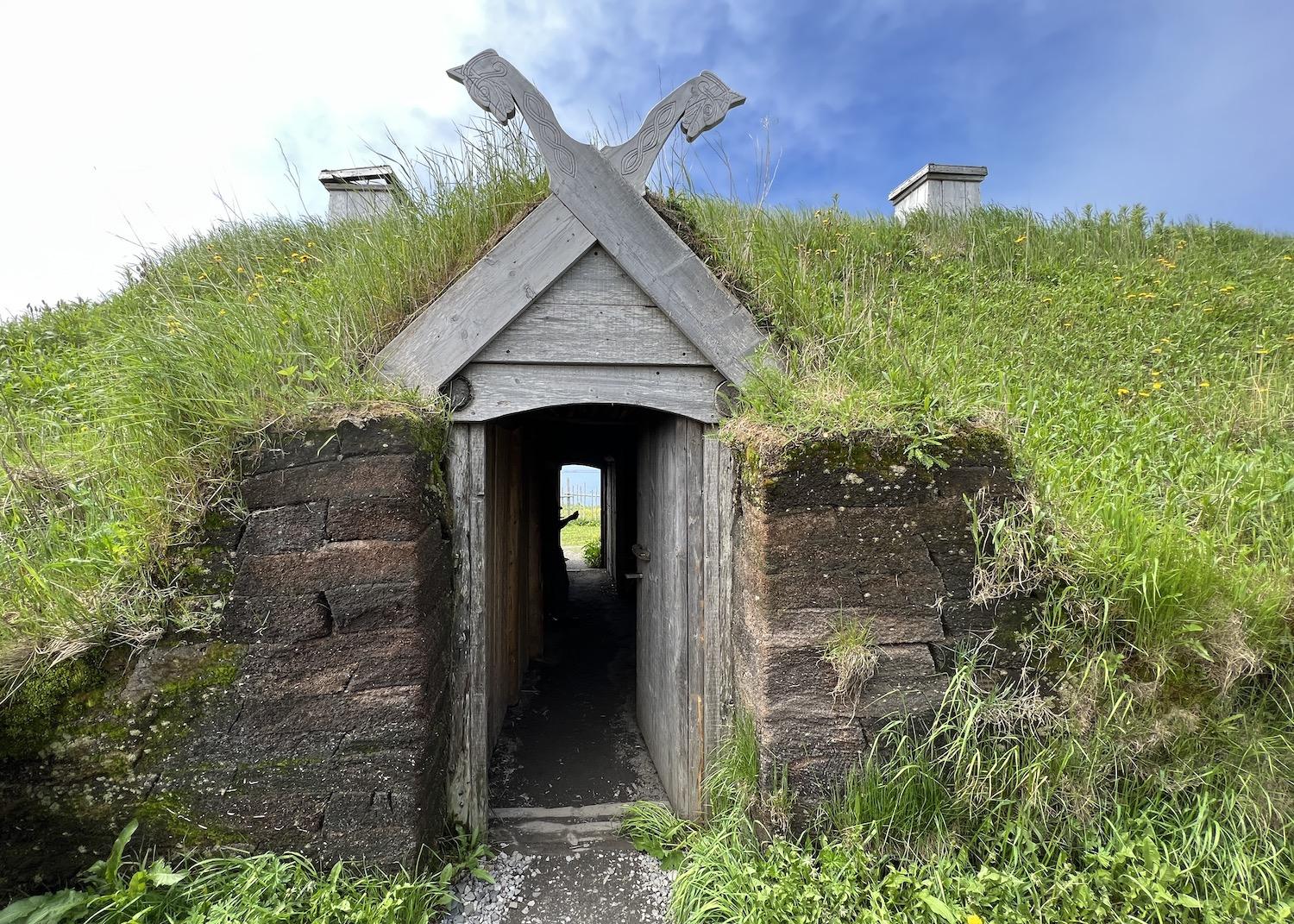
A reconstructed sod building at the Viking encampment at L'Anse aux Meadows National Historic Site/Jennifer Bain
Indigenous cultures — starting with Maritime Archaic, Groswater and Dorset Peoples and then followed by ancestors of the Beothuk — have used the site for at least 4,000 years ago and left behind traces of fire pits and tent rings and signs of tool making.
They were here up to, and after, the Norse arrival, but there's no evidence the two groups met here. They did so north and south of here. According to Parks Canada, some believe that clashes between the two groups discouraged the Norse from staying too long in Vinland and may even have forced them to return home.
In 2021, it was revealed that wood from three trees cut by Vikings and found at L'Anse aux Meadows had been precisely dated to 1021 CE. There's still no word on how long the Norse stayed, but the best guesses are between three and 20 years.
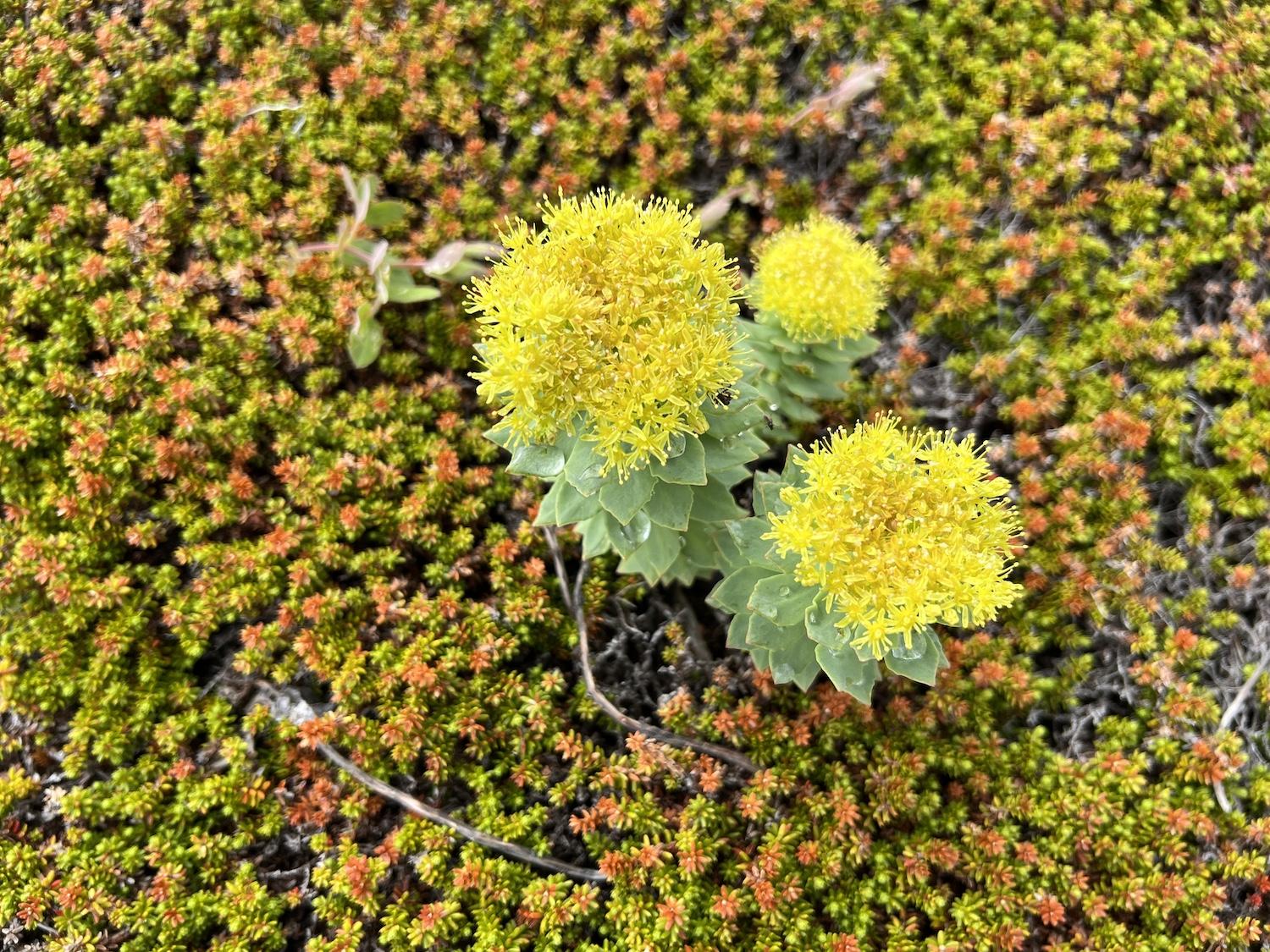
Roseroot flourishes along Birchy Nuddick Trail in L'Anse aux Meadows National Historic Site/Jennifer Bain
The name L’Anse aux Meadows, in case you're wondering, first appeared on an 1862 French chart as Anse à la Médée (Medee’s Cove). It was likely named for Medea, a sorceress in Greek mythology whose name adorned many ships in the 17th and 18th centuries. The name was anglicized by English settlers into L'Anse aux Meadows but the bay is still called Médée Bay.
The first time I visited, on a day trip from an expedition cruise ship between Greenland and Newfoundland and Labrador in 2018, I didn't realize the site protects almost 20,000 acres of land, offshore islands and marine environment. When I returned in July on a family road trip, we came twice over two days to explore the landscape as well as the visitor center, archaeological site and Viking encampment. Even then it wasn't enough time.
Walking in the footsteps of all those who have called this globally important patch of land home, I followed Birchy Nuddick Trail along the shoreline and inland over bogs and barrens to admire the area's biodiversity.
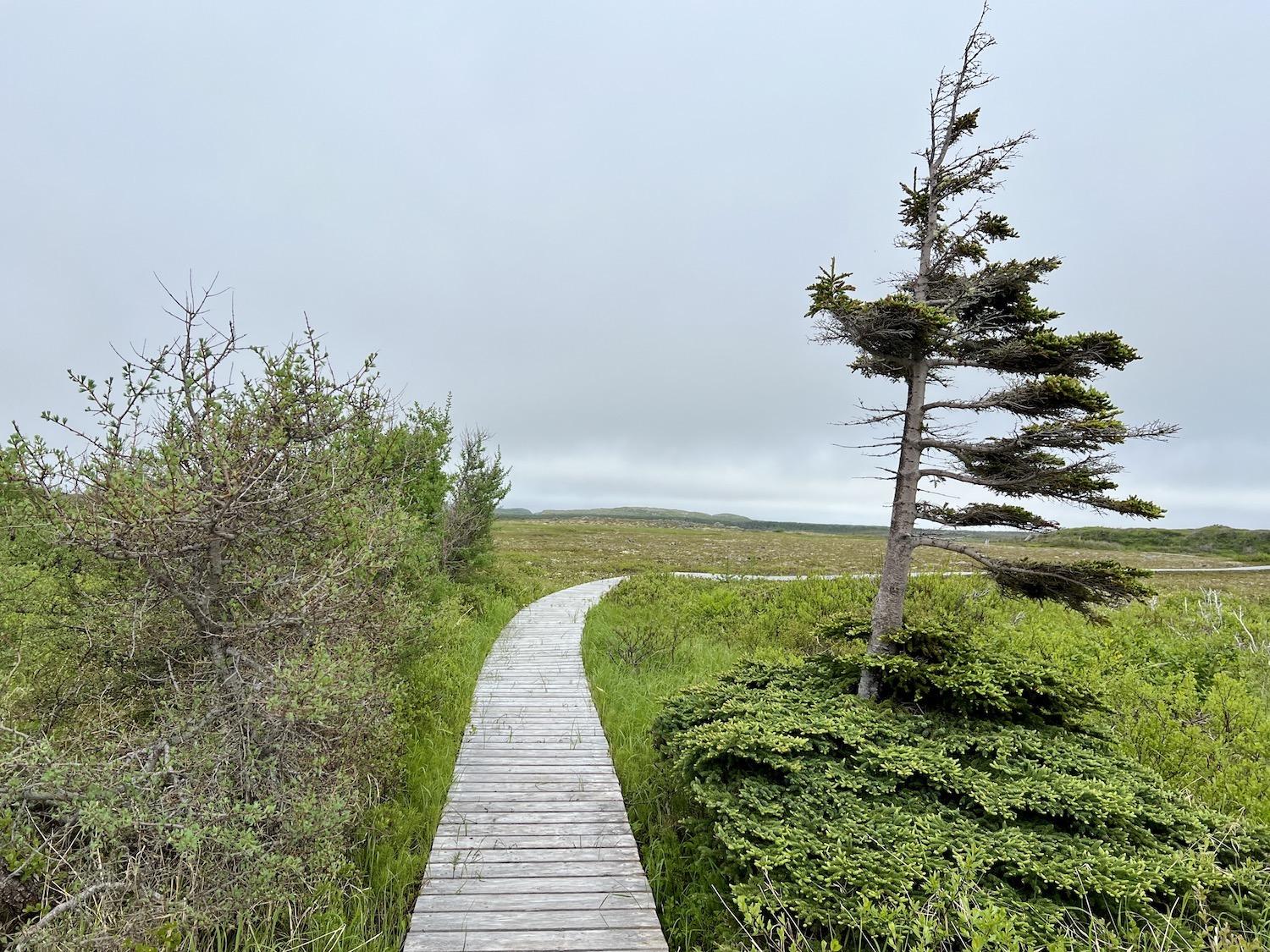
A boardwalk crosses a bog and barrens on Birchy Nuddick Trail at L'Anse aux Meadows National Historic Site/Jennifer Bain
My new favorite flower, roseroot, provided welcome bursts of yellow on a dreary day. The ever-abundant Labrador tea (yes it's used for a caffeine-free floral beverage) was blooming. Patches of tuckamore, a delightful local term for stunted and twisted balsam fir and spruce trees, made an appearance. Predatory plants, like pitcher plants and bladderwort, were nowhere to be found.
At Skin Pond, I read how sealskins were once soaked in this water to loosen the hair before tanning as part of a process to make waterproof boots, mitts and other clothing. And while I didn't spot any berries, I read how people have long come here for partridgeberries, bakeapples and crowberries, and to hunt Willow Ptarmigan and seabirds, cut wood, fish for trout and trap animals like mink.
A boardwalk led me across the bog and back to the parking lot. But had it not been there then that weathered sculpture of six Vikings set atop a rocky hill would surely have shown me the way.
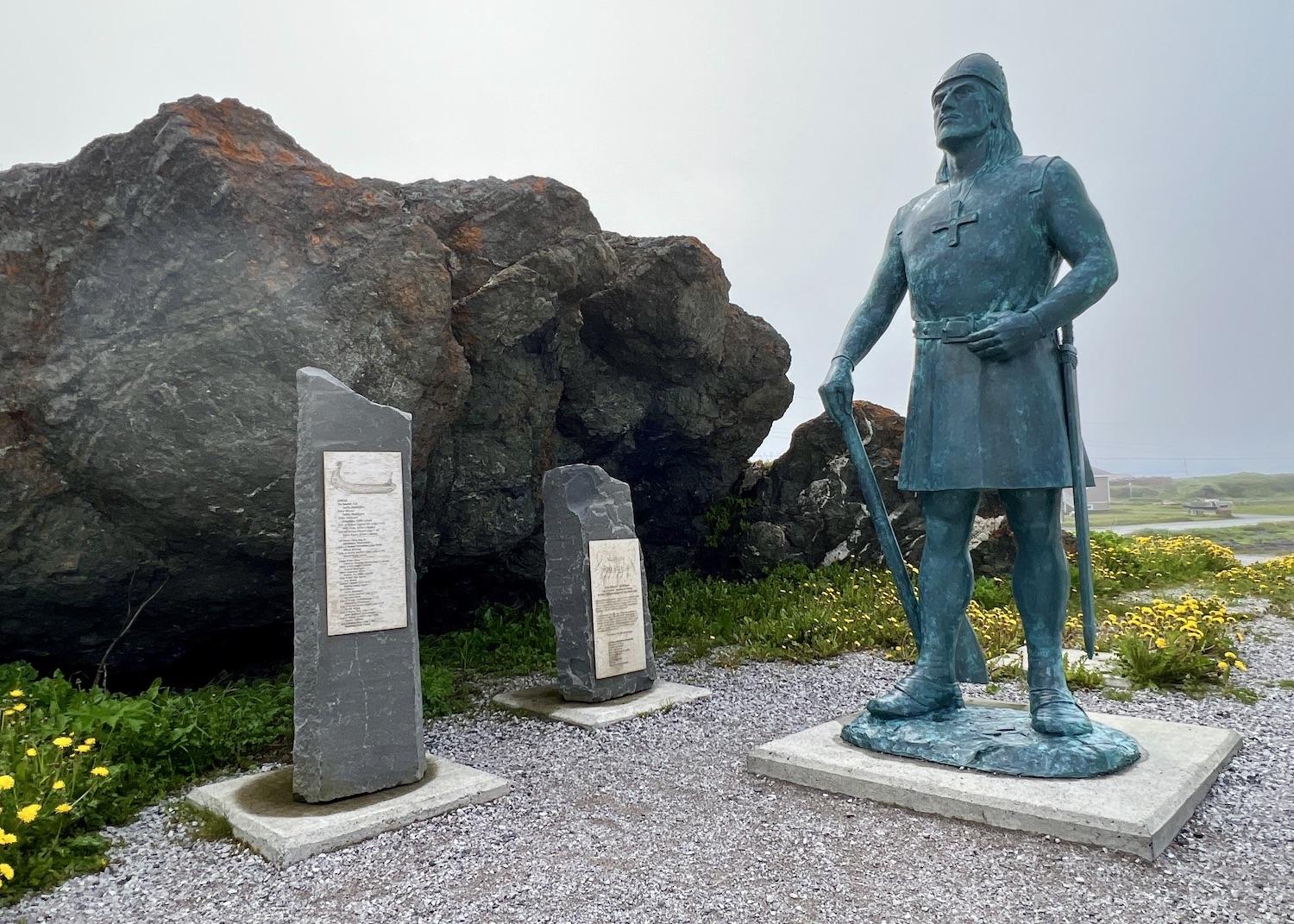
A statue of Norse explorer Leifur Eiríksson stands in the harbor of the community of L'Anse aux Meadows, not far from the national historic site/Jennifer Bain


